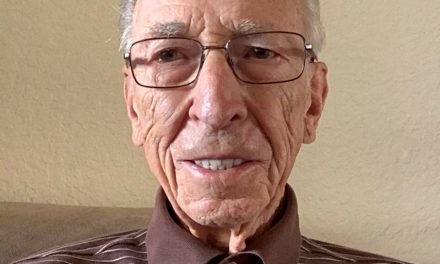
By Michelle Weiner, DO, MPH
Have you ever wondered why you feel so alive after exercising? Researchers have been trying to account for the analgesic and euphoric mental states produced during exercise. Initially, it was thought that alterations in the catecholamines adrenaline (epinephrine) and noradrenaline (norepinephrine) and endogenous opioid released during exercise induces physiological and psychological changes. The endorphin hypothesis alone may not be the only mechanism.
Exercise induces changes in mental status, including analgesia, sedation, anxiolysis, and a sense of wellbeing. Recent findings show that exercise increases serum concentrations of endocannabinoids, suggesting a possible explanation for a number of these changes. We all have an endocannabinoid system; it is our master regulator. We make endogenous cannabinoids on demand (Anandamide and 2 AG); we have cannabinoid receptors located throughout our central and peripheral nervous system and enzymes that break our naturally occurring cannabinoids down.
Research is underway to examine the effect of exercise on both serum and cerebrospinal fluid concentrations of endocannabinoids in exercising rats, while also examining several associated alterations of behaviors. Using trained male college students running on a treadmill or cycling on a stationary bike for 50 minutes at 70–80% of maximum heart rate, researchers found that exercise of moderate intensity dramatically increased concentrations of anandamide in blood plasma.
The runner’s high has been described subjectively as happiness, elation, a feeling of unity with one’s self and/or nature, peacefulness, inner harmony, boundless energy, and a reduction in pain sensation. An exercise induced altered state of consciousness has long been appreciated by endurance athletes. This sounds similar to the way we discuss how one feels while on psychedelic medicine. There is actually cross talk that exists between our Cannabinoid receptor in the brain (CB1) and our classic serotonin psychedelic receptor 5HT2A. Therefore, using cannabis can actually cause a similar altered level of consciousness or psychedelic feeling because of the dimerization between receptors.
Because activation of the endocannabinoid system reduces pain sensations, and alters emotional and cognitive processes, this finding has implication for some of the psychological effects that accompany exercise. As a result of the presence of cannabinoid receptors in muscle, skin, endothelial cells, and lung, a possible role for the endocannabinoid system in mediating certain physiological responses to exercise may exist.
Gregory Gerdeman and other colleagues investigated how exercise influences the endocannabinoid levels of two mammalian natural athletes – humans and dogs – and a low activity species – ferrets. The team published their discovery that animals that evolved for endurance exercise benefit from endocannabinoids while animals that did not don’t experience the pleasures, leading them to propose that natural selection used the endocannabinoid system to motivate endurance exercise in humans. The team publishes their discovery in The Journal of Experimental Biology.
‘Inactive people may not be fit enough to hit the exercise intensity that leads to this sort of rewarding sensation.’ However, inactive individuals can be helped to build up their exercise tolerance until they cross the threshold where they become motivated to exercise by endocannabinoids.
Another study performed by researchers in Wisconsin measured endocannabinoid levels and changes in mood before and after sessions with varying levels of intensity. The study found that subjects experienced a significant boost in endocannabinoids and improvements in mood following prescribed moderate-intensity exercise.
Data from 17 women who suffer with depression was analyzed during the study, where each woman completed two, thirty-minute exercises on stationary bikes at both moderate and preferred intensity. The data showed that both sessions on the bike improved mood, but only showed an increase in endocannabinoid levels for moderate intensity exercise. There was no difference for preferred intensity.
The study also shows there is some correlation between prescribed exercise and increase in mood, as opposed to preferred exercise. The same team completed a similar study in 2016 that looked at the effect of exercise on brain-derived neurotrophic factor or BDNF, a protein that regulates neuron growth and survival. People with depression typically have lower levels of BDNF. The 2016 study found that when women with depression were prescribed an exercise session similar in intensity to exercise they selected, their BDNF levels were significantly higher following the prescribed session. Therefore, “Having someone else prescribe the exercise could be involved in both the psychological and biological response to exercise.”
Through discovering the links between exercise and the endocannabinoid system, one goal is to develop new treatments for mental health conditions that include exercise. Exercise is an easily accessible, free option to feel well, stay healthy, improve brain health, strengthen bones and muscles, and help optimize one’s endocannabinoid system. It is a time you can connect with yourself or others, feel powerful, free, and be out in nature. Perhaps if I prescribed exercise more to my patients on my prescription pad, they might be more likely to respect the treatment plan or perhaps we should get our patients familiar with therapies that do not need to be picked up at a pharmacy…
Dr. Michelle Weiner, Spine and Wellness Centers of America, can be reached at (305) 974-5533 or mweiner@spinewellnessamerica.com.
Raichlen, D. A., Foster, A. D., Gerdeman, G. L., Seillier, A. and Giuffrida, A. (2012). Wired to run: exercise-induced endocannabinoid signaling in humans and cursorial mammals with implications for the ‘runner’s high’. J. Exp. Biol. 215, 1331-1336. jeb.biologists.org/content/215/8/1331.abstrac
Serum Endocannabinoid and Mood Changes after Exercise in Maj… : Medicine & Science in Sports & Exercise (lww.com)









